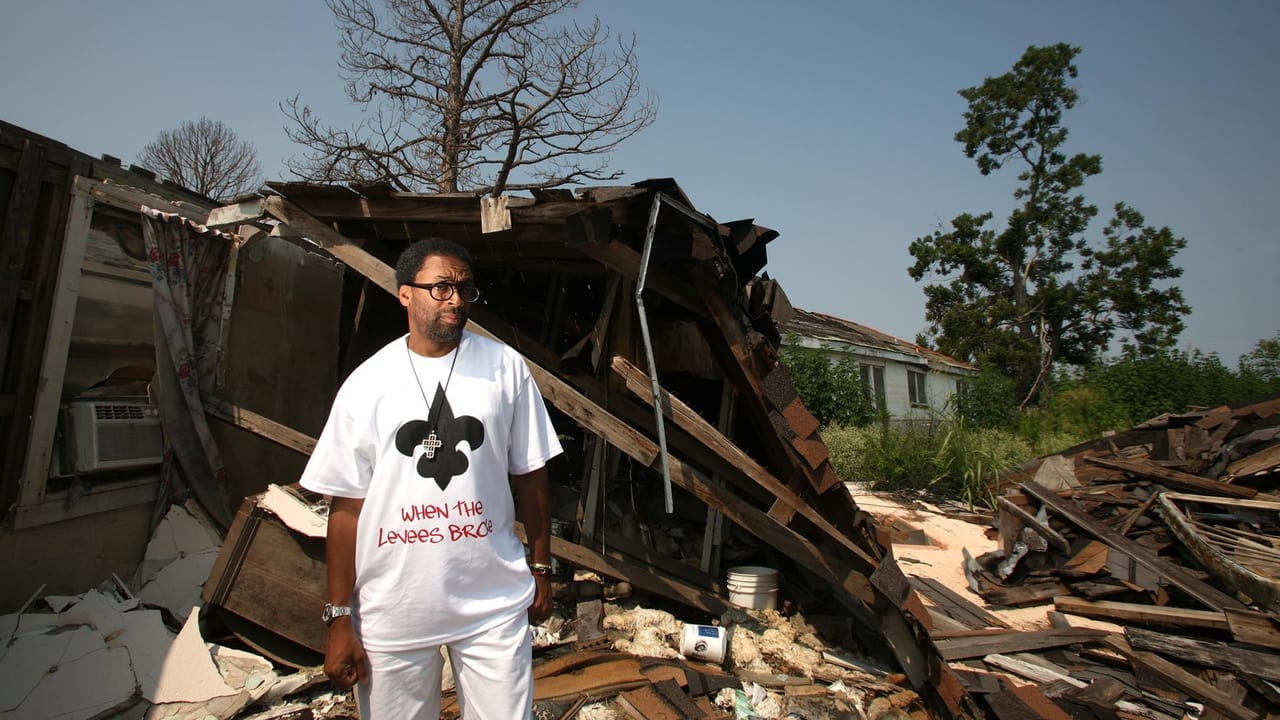

I cried, more than once. This is a very rare occurrence for me watching a film. Considering this was made by a "big-name" filmmaker, I was surprised to see the subtlety, honesty and roundedness. This was the kind of documentary that rarely makes it into cinemas here (and it was released here 'theatrically'). They usually end up (like most ofthe other great stuff being made) on BBC4 at midnight. It was comprehensive, beautifully structured and absolutely HUMAN. So many documentary filmmakers are trying to be Michael Moore; why don't a few try to be more like Spike Lee?
... View MoreAs a resident of south Mississippi, I am incredibly frustrated by media that reports "Hurricane Katrina Struck New Orleans." In truth, Hurricane Katrina struck the Mississippi gulf coast and south Louisiana, visiting upon those areas a thirty foot wall of water. New Orleans, on the edge of the weaker northwest quadrant of the storm, was merely brushed.It is a point which WHEN THE LEVEES BROKE brings out early: New Orleans received at best a glancing blow and it should have survived. The great disaster which befell the city was not so much natural as man-made. And throughout the documentary's four hour run time, director Spike Lee not only presents a kaleidescope of interviews with survivors, he repeatedly returns to the inevitable question: how did it happen? Much of the answer to that question depends on who you ask. New Orleans has a history of blowing levees, and early in the film several people state flatly that the levees were deliberately blown in an effort to protect the city's wealthier districts at the expense of poorer areas. But although director Lee gives the idea play, it soon becomes clear that no such effort was required: it was in fact a mixture of bad design; neglect; an unwillingness by city, state, and federal officials to spend the money; and, most simply, indifference toward the people of New Orleans and indeed Louisiana in general.WHEN THE LEVEES BROKE is truly devastating in its portrait of a great American city's collapse. Interviews with survivors, archival footage, and news reports paint a damning portrait of failure at almost every possible level. Most damning is the picture of federal inaction. While people drowned in their attics, President Bush was on vacation. While people collapsed from heat prostration and dehydration Condoleeza Rice bought shoes at an upscale store. The minutes became hours, the hours became days, and the cavalry simply did not arrive.Spike Lee is a somewhat problematic director, an artist who has the very distinct tendency to interject race issues into scenarios whether such is warranted or not. In this particular instance, however, I believe Lee is on target when the attributes federal inaction in large part to the fact that New Orleans is predominately poor and black. Had he gone further to note the obvious fact that the city is also of the deep South--a region that has typically been ignored by Washington--he would have struck a bull's eye; it is worth pointing out that south Mississippi, which is predominately white, experienced the same federal foot dragging and ridiculous mismanagement.When all is said and done, WHEN THE LEVEES broke is a stunning but flawed portrait of a horrific disaster that befell a great American city--a city which, as of this date, has yet to begin a significant recovery and which will very likely never again be the New Orleans of legend and song. It's great strength is that it allows the victims to speak for themselves; it's great failure is a tendency to posit race plain and simple as the cause of federal indifference. It was a mighty factor, to be sure, but nothing is ever quite as simple as all that.The DVD release includes three disks. The film itself offers a commentary by Lee; the third disk consists of bonus material that further elaborates what is indeed an American tragedy. In spite of occasional flaws, I recommend it very strongly.GFT, Amazon Reviewer
... View MoreYes, Spike Lee has an agenda. So what? So does every documentarian. No one who has an ounce of humanity can deny that what happened in the aftermath of Hurricane Katrina was a failure of grotesque proportions. We can get food and water to people in Southeast Asia in two days, but it took five days for the same government to get food and water to our fellow citizens!?! That is deplorable, and it makes the mayor, the governor, the president and everyone in government look bad. What makes them look worse is that an actor, Sean Penn, is able to do more -- and do more in a timely manner -- than anybody supposedly in power. What I appreciated most were the stories of those whose faith saw them through this catastrophe. I watched this during Holy Week, and that amazing rendition of "The Old Rugged Cross" stayed with me for days and will likely echo in me for weeks to come.
... View MoreEducational, Entertaining and Engaging. See what the news couldn't show you. Find out what key people had too say as the story unfolded, uncensored. Find out about the political side of Katrina.If you can even spell Louissana, you need to see this movie. Gripping interviews from all sides. Blacks, whites, residents and influential figures. Get to know these people. Be a spirit around the city and Mr. Lee takes you on a journey that will give you a bitter taste of what so many lived through.Stagering facts, stats and images will haunt you and you will learn a new meaning of 911.
... View More